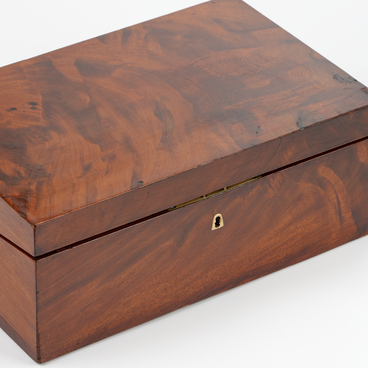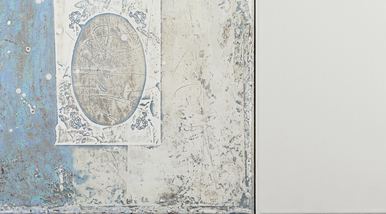The travel ink-well became part of the collection of the Yershov Museum Complex of Ishim City in the 1990s. It was used in one of the houses of the village of Gotoputovo in the Sorokinsky district of former Ishimsky Uyezd. The historical Siberian Route passed through these places. The ink-well was used to store liquid ink, with which people in the old days would write texts, important messages, official papers.
In the 17th–18th centuries, bronze ink-wells were common in Russia, they had the shape of a container with eyelet-holes. They could be hung on a belt or on the wall by these eyelets. Sometimes the container was decorated with relief drawings inspired by myths or fairy tale scenes. Officials of different ranks also used such ink-wells.
Researchers suggest that ink-wells have been used since the time when papyrus and parchment were invented. The civilizations of ancient Egypt and China used oil or soot as the base for ink. Later, in the third century AD, the Romans and the Greeks adopted this practice. The early nomadic tribes used to have travel ink-wells — a griffin or a unicorn was depicted on them. The former was associated with the keeper of treasures; the latter symbolized purity and chastity.
An ink-well is a simple object, so almost any container could be used as one. At different times, clay bowls, animal horns, glass medicine bottles were used as ink-wells. But most often the container was made separately — as a household item. The containers could have elegant legs, a special lid or a narrow neck. The design and materials changed with the technological development. For ink-well manufacturing, metals (copper or cast iron), crystal or even semi-precious stones began to be used.
In the 17th–18th centuries, bronze ink-wells were common in Russia, they had the shape of a container with eyelet-holes. They could be hung on a belt or on the wall by these eyelets. Sometimes the container was decorated with relief drawings inspired by myths or fairy tale scenes. Officials of different ranks also used such ink-wells.
Researchers suggest that ink-wells have been used since the time when papyrus and parchment were invented. The civilizations of ancient Egypt and China used oil or soot as the base for ink. Later, in the third century AD, the Romans and the Greeks adopted this practice. The early nomadic tribes used to have travel ink-wells — a griffin or a unicorn was depicted on them. The former was associated with the keeper of treasures; the latter symbolized purity and chastity.
An ink-well is a simple object, so almost any container could be used as one. At different times, clay bowls, animal horns, glass medicine bottles were used as ink-wells. But most often the container was made separately — as a household item. The containers could have elegant legs, a special lid or a narrow neck. The design and materials changed with the technological development. For ink-well manufacturing, metals (copper or cast iron), crystal or even semi-precious stones began to be used.
Over time, the shape of the container evolved and leak-proof versions were invented. To achieve this, cone-shaped funnels were installed inside, which did not allow the ink to flow out when the case was tipped over. Therefore, the accessory became travel-friendly. In the 20th century, the ink-well was replaced by the pen. First, it was filled with ink, and then the ink chamber with the ball tip was designed for it.



